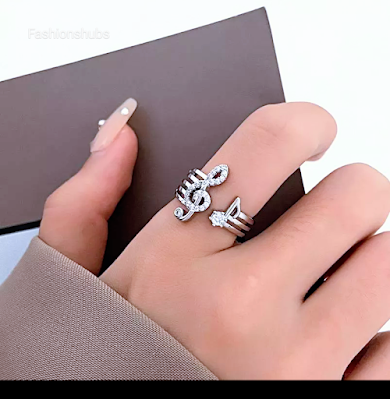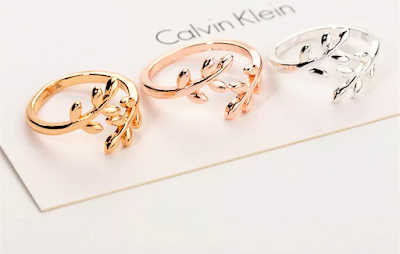CHECK THESE LATEST ROCKING HIP HOP MULTI-LAYER ADJUSTABLE RING JEWELRY
A ring is a circular band that is typically constructed of metal and worn as decorative jewelry. Whether used to describe an ornament worn on another body part, such as earrings, neck rings, arm rings, or toe rings, the term "ring" always refers to jewelry worn on the finger. Bands worn loosely, like a bracelet, are not rings since rings always fit securely around or in the area of the body they decorate. Almost any hard material, including glass, metal, wood, bone, stone, and plastic, can be used to create rings. They might be set with different kinds of stone or glass, or with precious stones like diamonds, rubies, sapphires, or emeralds.
Rings have symbolic meanings related to marriage, remarkable achievement, high rank or power, participation in an organization, and the like, despite the fact that some people wear them just as decorations or as obvious displays of riches. Rings can be customized with insignia that is imprinted on a wax seal or has a little compartment for hiding items.
For the placement of a ring, each finger had a symbolic association or meaning that was significant to onlookers (the majority of which were lost in antiquity and varied with culture).
Throughout most of the world, betrothal, engagement, and wedding bands are now typically worn on the ring finger of the left hand, while in other nations the right hand finger is used. During World War II, this tradition was essentially became the standard.
The fourth finger on the left hand, known as the "ring finger," is used because of an ancient myth that the vena amoris, or vein of love, runs directly from the ring finger of the left hand to the heart. When Henry Swinburne mentioned it in his book about marriage, this thought was popular in 16th- and 17th-century England. It can be traced to ancient Rome, when Aulus Gellius cited Appianus as saying that the ancient Egyptians had found a fine nerve linking the fourth finger to the heart.
On occasion, rings have been altered to dangle from necklaces or bracelets.
The left pinky or little finger is where the signet ring is customarily worn.
On the first finger of the right hand, a birthstone ring or "birthday" stone ring is typically worn to denote the month and day of the week in which the wearer was born.
Betrothal, engagement, and wedding bands are currently commonly worn on the left hand's ring finger, while in some countries the right hand finger is used. This custom practically became the norm throughout World War Two.
According to an old superstition that the vena amoris, or vein of love, travels directly from the ring finger of the left hand to the heart, the fourth finger on the left hand, sometimes known as the "ring finger," is utilized. This idea was well-liked in 16th- and 17th-century England when Henry Swinburne included it in his book on marriage. When Aulus Gellius quoted Appianus as saying that the ancient Egyptians had discovered a delicate nerve, it can be traced back to Rome in ancient times. linking the fourth finger to the heart
Some nations continue to employ conventional sizing systems even though the ISO standard defines ring size in terms of the inner circumference (measured in millimeters). Little metal beads called sizing beads are inserted to a ring's interior surface to retain it against the finger; they have the advantage of being easily added or withdrawn and serve to effectively reduce the ring size.




































Comments